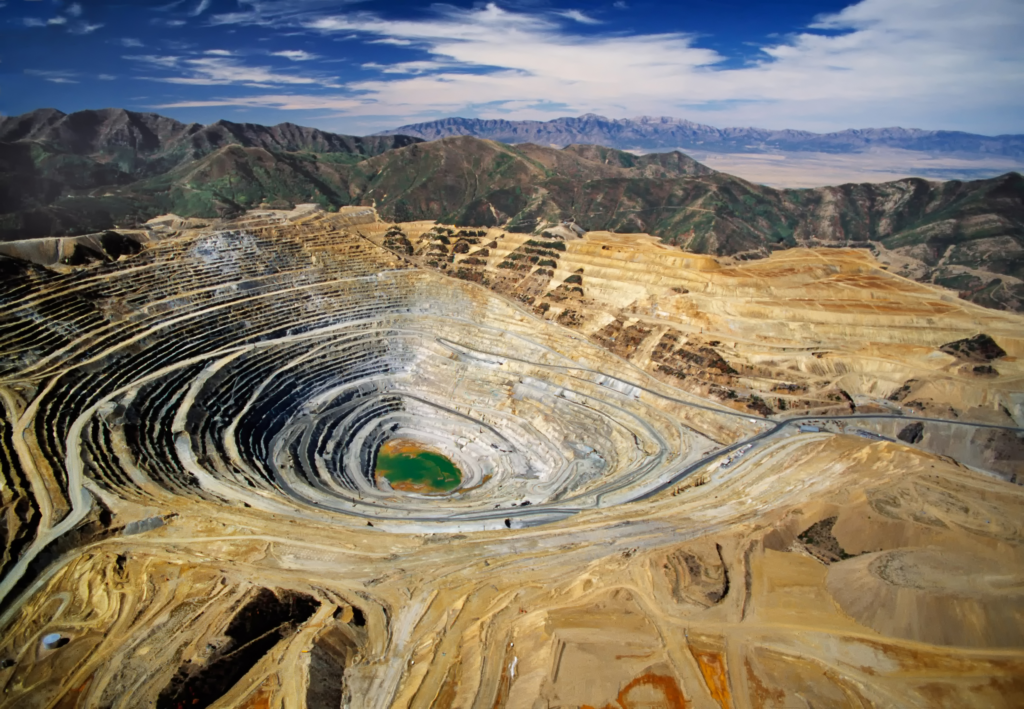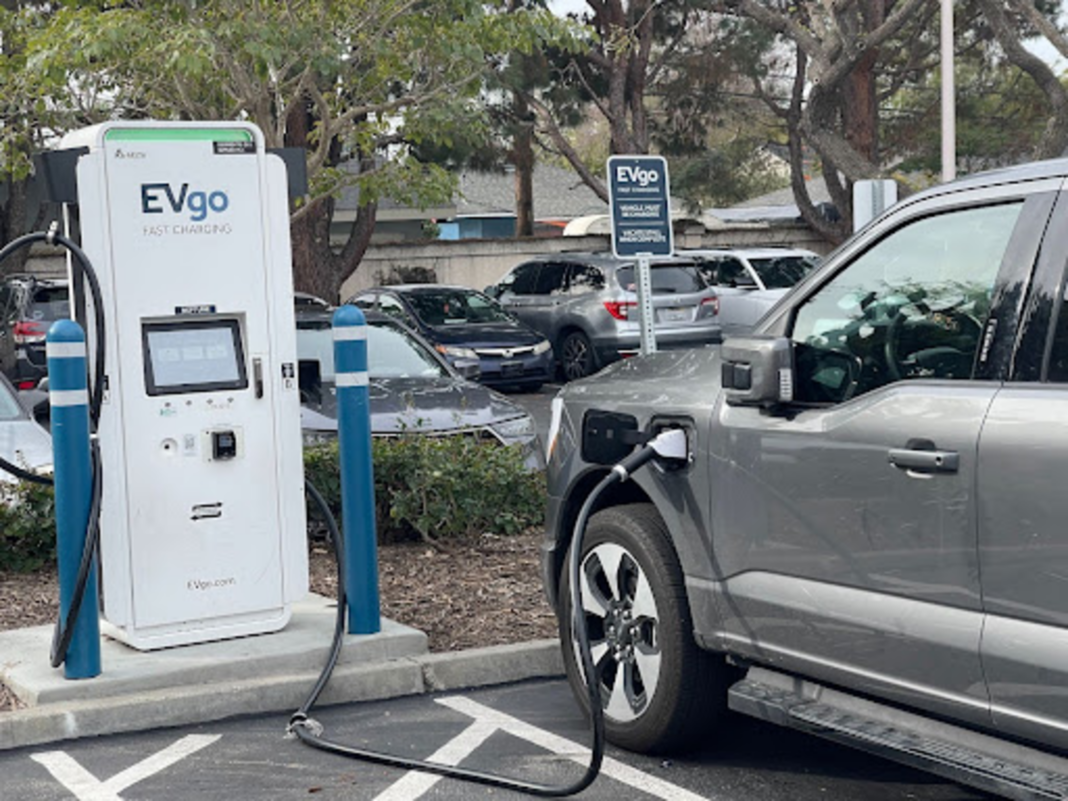Driving an electric truck gave one writer joy, especially when she used her house’s solar panels to charge it up. But when a road trip took her by the mine that provides the raw materials for the batteries that power trucks like hers, she rethought her approach to transportation.
I drive an electric truck, and I love it. From my crow’s nest perch in the driver’s seat I can see around corners and parked vehicles and I feel safe driving it. One of my favorite things is opening the “frunk” and unloading picnic blankets and beach towels from the space where the engine would normally be.
I can’t help but compare it to rides of the past. My thirty-year history of driving is mostly a story of old and older vehicles in decline. My first car was a Honda exoskeleton that never got off the blocks. Next came a rusting Ford Bronco whose failing starter I had to bypass by climbing under the hood with a screwdriver. One of my favorites was a little Toyota pickup–my first introduction to manual transmission and such a diminutive darling that you hardly noticed the lack of air conditioning. She had a radio and a tape deck, but her footwells were bare metal. On hot days when I cranked down the windows and cranked up the volume, the literal rubber-to-road reverberations sang through the soles of my sneakers.
That little pickup took me from college to grad school, and then to my first job. In the rainy season I kept the bed full of sandbags and boxes of used books, and I learned that to have a truck was to have friends…friends who needed to move stuff. Local food pantries often needed volunteers with hauling capacity, and when my sister — then in the plant business — had a big job, I could help with that too.
Eventually I moved to a big city and traded in my keys for a subway pass. By the time I needed a car again, I also needed a backseat to strap a baby into. Thus began my decade as chauffeur to short, noisy, crumb-snorting backseat passengers: the toddler/Prius years.
Hybrid vehicles served us well, but my husband, a patent attorney whose first true love was the battery, dreamed of going all-electric. So when I told him I thought our next vehicle should be a truck, he stashed that comment quietly away like a squirrel with a nut. Next thing I knew, he was calling from a dealership with paperwork in hand. He’d found us an electric truck, just not the one I had in mind. This was a big truck. A hulk. A beast. Did we have the driveway space? Did we have the need?
He’d done his due diligence, shopping for this vehicle the way I stalk real-estate listings and our son hunts Pokémon — with single-minded intensity. He did try to test-drive smaller options, but at 6-foot-4, his head brushed the roof. What was a giant American with three leggy children to do?
As I may have mentioned, we have growing kids, and part of that experience is living in a home that functions as a halfway house for reusable goods. Friends and neighbors drop off clothes and toys their kids have outgrown, knowing we’ll do the same in time. It’s the same story with furniture — bunk beds and toy chests eventually make way for full-size beds, dressers, and bookshelves. Maybe it’s a case of “if you build it, they will come,” but I can honestly say that in the fourteen months I’ve been driving it, my truck has been in regular use hauling recyclables and donations (and, OK, camping gear).
As yet I haven’t taken it on any long trips. When strangers call out — and they very often do —“How far can you get in that thing?” I tell them: about 250 miles between charges, or about three weeks of ordinary use. When it’s time, I can recharge at a local fast-charging station for about the price of a normal car’s tank of gas, or I can plug in at home and let the solar panels charge it overnight. The latter option is slower but infinitely cooler, because I can imagine when I’m driving that the whole rig is being propelled through space and time by the sun itself.
It’s easy to be sickened by the sight of a blasted mountain when it rears up in front of you unannounced. It’s hard to reconcile one’s personal part in the blasting. All at once I could see the clear and direct line connecting Utah’s mines to the truck I drive, and for that matter, to all the daily devices I rely on.
I think about the battery a lot. How amazing the technology is, how tired it must get hanging on to the truck’s undercarriage. I think about how great my hands smell after not pumping gas. But I also wonder how long the battery will last, and where we go when we die where it will go at the end of its life.
On our last road trip we took my husband’s hybrid car to visit friends in Utah. While driving the mountain pass on Interstate 10 just south of Salt Lake City, I saw the massive excavated steps of the Bingham Canyon Copper Mine rise into view like an enormous ruin. I felt like I could see the shape of my own truck battery, all 1,800 pounds of it, knocked like a giant broken tooth out of the Oquirrh Mountains.
It’s easy to be sickened by the sight of a blasted mountain when it rears up in front of you unannounced. It’s hard to reconcile one’s personal part in the blasting. All at once I could see the clear and direct line connecting Utah’s mines to the truck I drive, and for that matter, to all the daily devices I rely on. Consider the phone or computer you’re reading this story on. Chances are very high (around eighty percent) that they contain a literal piece of Utah.

Which brings us back around to the question we’re here for: What about the environmental burden? For a suburban family of five, does it make sense to invest in an electric truck?
Take away frills we definitely don’t need, like heated seats and large digital screens, and it still seems like overkill. I don’t commute or carry heavy equipment to work, and I know for a fact that I can handle most of my daily errands, including school pickups and dropoffs, on a bicycle. Why use all that heavy metal?
Let’s talk about materials. I wonder:
- How many precious metals will it take to transport my precious cargo to, say, piano lessons once a week?
- Is it really worth the cost to hear another hundred rounds of “Hot Cross Buns” in C Major?
- Can we speed up production of solar-powered five-seater marshmallow cars?
As Bluedot’s Leslie Garrett points out in her explainer on micromobility, North America spends far more than it needs to on transportation infrastructure because most Americans use large vehicles, like my truck, even for single-passenger trips under two miles. We could stop doing that — and, oh! A lot of people already have. Sales of electric scooters and e-bikes are rising in Europe and Asia. There’s even reason to hope that my own SoCal town, already dotted with bike rental options (and the lanes to ride them in) is at least micro-curious.
It’s not the answer for everyone, but I like to imagine what a difference it could make if those of us who could, did replace some of those big-truck trips for scooter, bike, or foot trips. If we pumped up our bike tires and turned our faces toward the sun, we could harness an energy source that still has a lot more to give.


